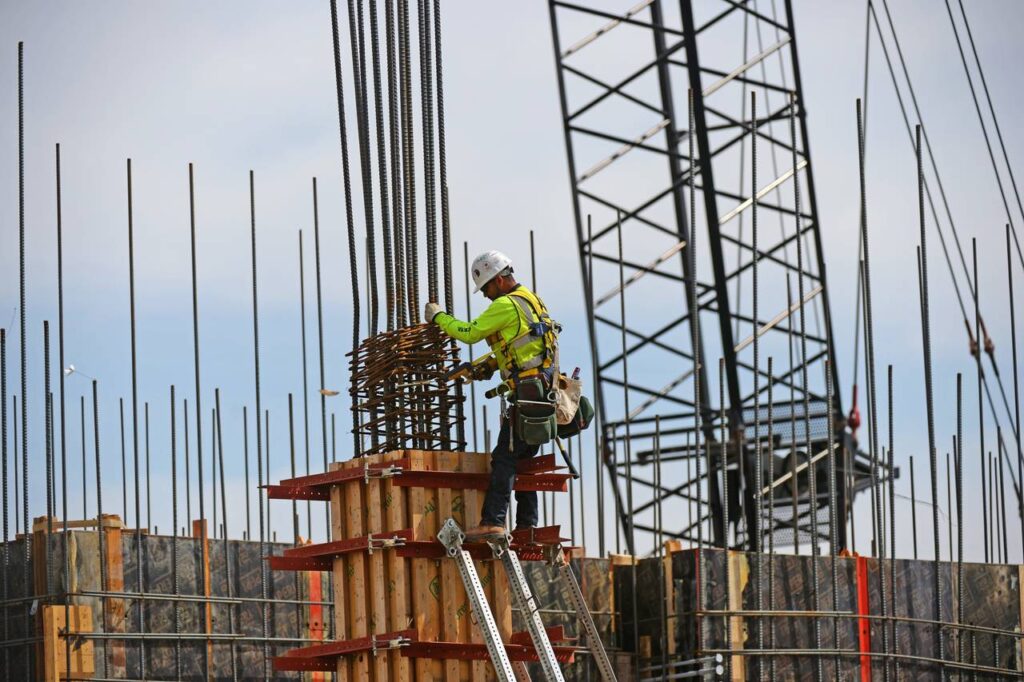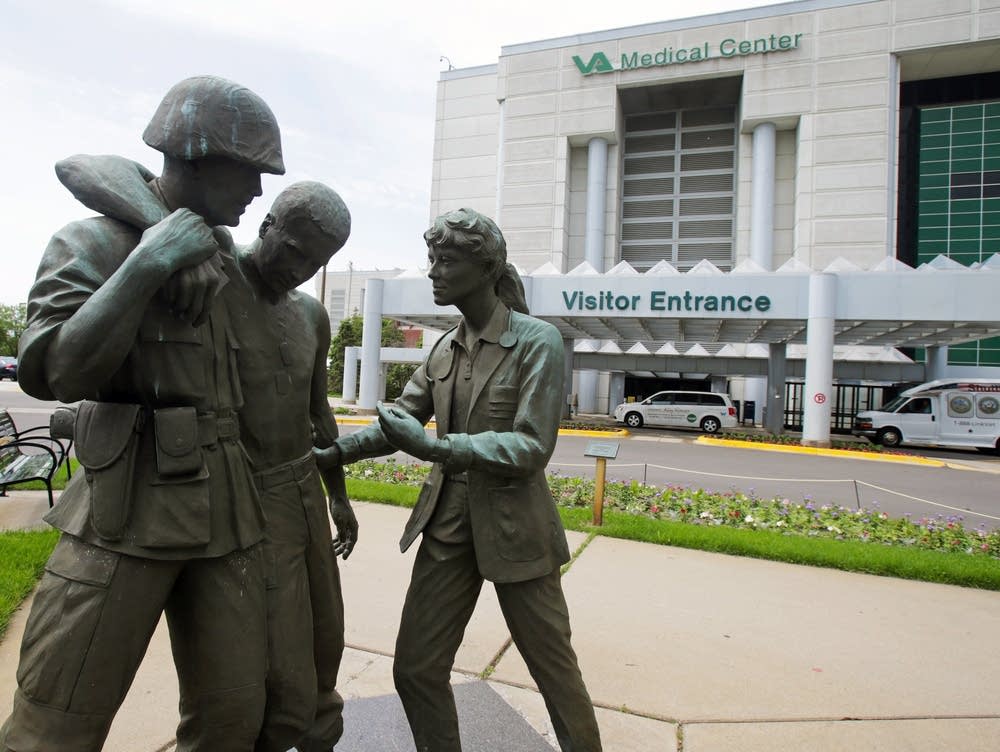
Now, federal officials are about to see if a BRAC for the Department of Veterans Affairs will prove just as controversial.
VA officials later this month are expected to name the nine individuals who will serve on the department’s Asset and Infrastructure Review Commission, a congressionally mandated panel that will recommend “actions to modernize or realign a facility of the Veterans Health Administration.”
The initiative is modeled after the Defense Department’s BRAC procedures, and could end up shuttering dozens of VA health care facilities across the country. VA currently manages 171 medical centers and 1,112 outpatient sites, a massive footprint that serves more than 9 million veterans annually.
But many of those buildings are aging and failing. In March, administration officials noted that while the median age of private-sector hospitals in America today is about 11 years, the median age of VA hospitals is roughly 58 years.
Still, the facilities are often a key social and economic hub for cities, and the potential loss or reduction of the medical centers is already on the minds of community leaders. VA officials haven’t given any public clues on which sites may be on the chopping block, or which cities might see new construction.
On Tuesday, during a budget hearing before the House Veterans’ Affairs Committee, Rep. Elissa Slotkin, D-Mich., asked why the department is looking into shrinking its footprint at a time when demand for veterans services is on the rise.
“I think about what we might be able to do here on giving more access to care for people who have been exposed to things like burn pits overseas,” she said. “So help me understand why I shouldn’t be skeptical of the commission and what the results are going to be.”
VA Secretary Denis McDonough, confirmed to the job four months ago, is charged with implementing the review plan put in place by the previous administration and a previous Republican-led Congress. He offered only partial reassurance for Slotkin’s concerns.
“I inherited this, and I’m not trying to get you to be skeptical or feel otherwise,” he said. “My commitment is to handle this in a 100 percent transparent way, because I think that’s the best way to make public policy decisions, especially as it relates to infrastructure.”
Naming the commission
Under rules outlined three years ago by the VA MISSION Act, the commission will look at “modernization or realignment of facilities” across the department’s health facilities. That can include building or leasing new space in underserved areas or shuttering locations that are seeing drops in usage.
At the time of passage, President Donald Trump’s administration had been pushing for expansion of private-sector care options for veterans health appointments, another key part of the Mission Act. Supporters saw the two issues as connected; as more veterans found private doctors in their local communities, fewer big, expensive VA medical facilities would be needed.
But critics decried that mentality as privatization of VA’s core mission to provide healthcare for veterans.
And, since the bill became law in June 2018, the department has dealt with major upheaval due to the coronavirus pandemic, including shifting millions of medical appointments to online consultations.
“As we come out of the pandemic, we’re not sure that all of the veterans will want to stay in that virtual environment or whether they’ll want to come back to the facilities for visits,” C. Brett Simms, executive director of VA’s Office of Asset Management, told members of the Senate Veterans’ Affairs Committee on Wednesday. “As we learn more about that, it will absolutely impact the footprint.”
Late last month, VA published its overarching criteria for the asset review, with the goal of establishing a plan “for the continuing evolution of veteran health care, incorporating major trends and events in the national and global health ecosystem.”
Interpreting that will fall to the nine commissioners, who were supposed to be named by the end of May but are now expected in the next few weeks.
In a statement, VA press secretary Terrence Hayes said that VA and congressional officials are finalizing the vetting process “to identify the most highly-qualified individuals” for the work.
After the Senate confirms members, the commission will have about six months to compile their recommendations for changes. Public hearings on the proposed closings or constructions will take place throughout 2022. President Joe Biden will have until February 2023 to approve or reject the report.
All that means that any hospital closures or constructions likely won’t happen until late 2023 or early 2024.
Spend now, plan later
But veterans advocates say VA hospitals need improvements now, not three years down the road.
“While we await the formation of the AIR commission, we must not wait for its completion, to perform maintenance, upgrades, and necessary construction,” Patrick Murray, director of the Veterans of Foreign Wars’ National Legislative Service, told lawmakers on Wednesday. “AIR represents the future of the footprint of VA. But there are billions of dollars of work needed now.”
Earlier this year, officials from VFW, Disabled American Veterans and Paralyzed Veterans of America released their annual Independent Budget assessing VA’s financial needs for the coming year.
Overdue construction projects are frequently featured as one of the coalition’s biggest concerns. This year the group estimated the department needs about $3.6 billion in spending to catch up with nationwide needs, nearly double what was spent last year and $1.3 billion more than what the White House requested for fiscal 2022.
On top of that, the budget document calls for more than $7 billion in “seismic corrections” at VA medical centers across the country. In 2015, the VA Inspector General identified nearly 100 sites (mostly in the western United States) that could face serious risks from an earthquake, but associated facility repairs have not been made.
VA officials are pushing for a big boost in VA construction, just not in the base budget. Instead, the administration has included about $18 billion for VA facilities in its proposed $2 trillion infrastructure plan.
“There is a backlog of high-efficiency projects that would help increase the health security of our veterans, put people back to work, and achieve an important national project,” White House officials said in a statement when the plan was released in March.
But that proposal has faced strong opposition from conservatives because of its hefty price tag. And Republicans on the House and Senate Veterans’ Affairs Committee have questioned whether it is a smart strategy to invest billions in VA hospital improvements before the AIR commission offers recommendations on where the money could be best spent.
“VA is in the process of identifying projects and facilities [for the money], but I have unanswered questions regarding how much they cost and how the funding will be prioritized,” said Sen. Jerry Moran, R-Kan. and ranking member of the Senate Veterans’ Affairs Committee.
“The administration is requesting money now with the promise to write a plan for where and how to spend it later. This is entirely backwards.”
Lawmakers take first steps toward a BRAC for VA facilities
Supporters admit the idea of closing VA buildings nationwide will be controversial, but said too many existing facilities are aging and underused.Leo Shane III
Building anticipation
No timeline has been set for when the Senate may confirm the AIR commission members. Congressional leaders have suggested that as the commission conducts its work through the rest of the year, lawmakers will likely have their own hearings on infrastructure issues, particularly in regards to the short-term Biden spending plans.
McDonough said he welcomed that outside scrutiny.
“There is no limit on you guys asking for additional information, getting smart about [this topic] and pushing us on it, ” he told members of the House Veterans’ Affairs Committee. “If you continue to have hearings on it, that would seem to make sense.”
Hearings this fall could preview the fights after a final commission report is finished next year. In previous defense BRAC rounds, the commission reports were followed by months of lobbying by lawmakers, local officials and business leaders in an attempt to save their military bases.
The AIR commission’s final report could produce the same drama if it’s heavy on hospital closures. In a press conference last month, McDonough signaled that he anticipates it will not.
“What I really hope the commission does not do is just look at one of the many types of service that VA provides to our veterans and to our country as it is making decisions,” he said. “All the stuff that VA is doing — hopefully they dig into the research, training, innovative care — that’s going to be made better with investment.”
Credits / Original Source:
Story by Leo Shane III









